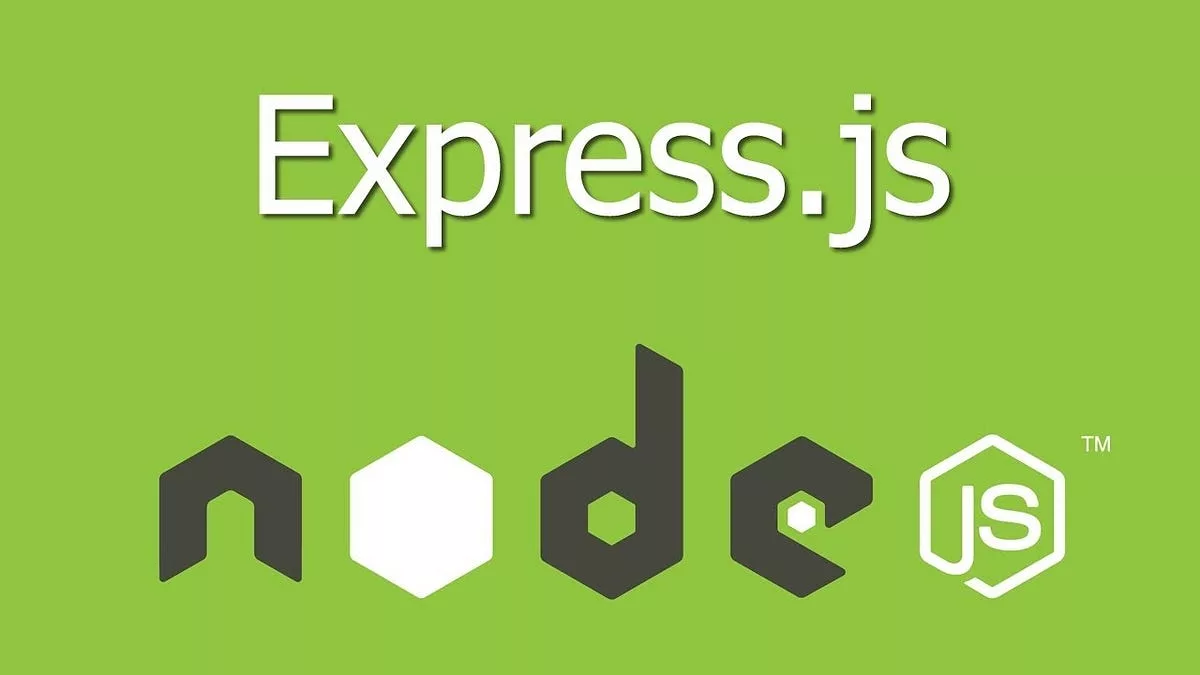The MERN stack (MongoDB, Express.js, React, and Node.js) has emerged as a powerful and popular choice for building scalable applications.
According to recent statistics, the MERN stack has witnessed a remarkable surge in adoption. A survey conducted reveals that React, a core component of the MERN stack, has one of the largest market shares, with 4.2%. While Node.js, which powers the backend of MERN applications, Node JS has experienced a 40% usage increase every year.
As the demand for responsive and feature-rich web applications is growing, understanding how to harness the potential of the MERN stack has become a strategic imperative for developers and organizations alike.
In this comprehensive guide, we will walk you through the steps to build scalable and high-performance applications using the MERN stack. So, you can tap into the remarkable capabilities of these cutting-edge technologies.
Backend Development with Node.js and Express.js

Getting Started with Node.js and Express.js is a fundamental part of building scalable applications using the MERN stack. Here’s the process of setting up a Node.js backend server using Express.js, connecting it to a MongoDB database, and implementing key features like RESTful APIs and user authentication.
Creating a New Express.js Project
To begin, let’s create a new directory for your project and set up your Express.js application:
- Initialize a New Node.js Project: Open your terminal and navigate to your project directory. Run the command “npm init -y” to initialize a new Node.js project.
- Install Express.js: Install Express.js as a dependency and run “npm install express”
- Create the Express App: Create an ‘app.js’ or ‘server.js’ file to set up your Express application. Import Express and create an instance of it.
Building RESTful APIs using Express
Express makes it easy to create RESTful APIs for your application. It has a code that sets up a GET request endpoint at /api/hello that responds with a JSON message.
Integrating MongoDB for Data Storage
MongoDB is a NoSQL database that works well with Node.js and Express.js. To integrate MongoDB:
- Install the MongoDB Driver: Install the MongoDB driver for Node.js.
- Set Up a MongoDB Connection: Connect your Express application to a MongoDB database using the MongoDB package.
Implementing Authentication and Authorization with JWT
Implementing authentication and authorization using JSON Web Tokens (JWT) is a common approach. Here’s an overview of the process:
- Install Dependencies: Install packages like ‘jsonwebtoken’ and ‘bcrypt’ for JWT-based authentication and password hashing.
- User Registration: Create API endpoints for user registration, where user details are stored securely in your MongoDB database.
- User Login: Implement a user login endpoint that checks user credentials and generates JWT tokens upon successful authentication.
- Protecting Routes: Use middleware to protect certain routes that require authentication. Decode and verify JWT tokens to ensure users have the necessary permissions.
- Token Refresh: Implement a token refresh mechanism to extend JWT validity.
This is a high-level overview of backend development with Node.js and Express.js. Depending on your project’s complexity, you can add more features, such as user management, file uploads, and data validation. Make sure to organize your code into controllers, models, and routes for maintainability.
Frontend Development with React

Here’s how you can set up a React application, create reusable UI components, set up routing, make HTTP requests to the backend, and manage state using either Redux or the React Context API.
Creating a New React Application
To start building the frontend of your MERN stack application, follow these steps to create a new React project:
- Generate a New React App: Open your terminal and navigate to your project directory. Run the “npx create-react-app my-mern-app” command to create a new React app using Create React App (CRA).
- Folder Structure: CRA sets up a well-organized folder structure with everything you need to get started.
Building Reusable UI Components
React encourages the creation of reusable UI components. Here’s how you can create a simple example:
- Create a Component: In your React project, create a new component, e.g., “MyComponent.js.” Define the component using functional or class-based syntax.
- Props: Utilize props to pass data and functionality to your components. This allows you to reuse them with different data and configurations.
Setting Up Routing with React Router
For multi-page applications or complex user interfaces, setting up routing is essential. React Router is a popular library for this purpose:
- Install React Router: Install React Router using “npm install react-router-dom.”
- Create Routes: Define your application’s routes using ‘BrowserRouter,’ ‘Route,’ and ‘Link components’ from React Router.
Making HTTP Requests to the Backend
To interact with your backend APIs, you can use JavaScript’s built-in fetch function or a library like Axios:
- Install Axios (Optional): Install Axios using ‘npm install axios’
- Making API Requests: Use Axios or fetch to make HTTP requests to your backend endpoints. Handle responses and errors accordingly.
State Management with Redux or React Context API
Managing state is a crucial aspect of frontend development. Depending on your project’s complexity, choose either Redux or the React Context API:
- Redux: If your application has complex state management needs, such as global app state, multiple components sharing data, or asynchronous actions, consider implementing Redux. You’ll need to install the necessary Redux packages and create actions, reducers, and stores.
- React Context API: For simpler state management, especially in smaller projects, you can use the React Context API. It allows you to create and share state across components without the need for external libraries.
Component Styling
Style your components to create an attractive user interface. Use plain CSS, pre-processors like Sass, or CSS-in-JS libraries like styled-components or Emotion.
Internationalization (i18n) and Accessibility (a11y)
Consider implementing internationalization for multi-language support and ensuring accessibility for all users. React has libraries like react-intl and tools like axe-core for these purposes.
Connecting the Backend and Frontend

Connecting the back end and front end enables data exchange and communication between the two parts of your application. Below’s the process of connecting your frontend React application to the backend Node.js and Express.js server.
CORS Configuration
Cross-Origin Resource Sharing (CORS) is a security feature that restricts web applications running at one origin (domain) from making requests to a different origin. Since your frontend and backend run on different ports or domains during development, configure CORS to allow these cross-origin requests.
- Install the cors Middleware: In your Express.js backend, install the cors middleware using npm install cors.
- Configure CORS: In your Express application, use the cors middleware to specify which origins are allowed to access your API. For development, you can allow all origins as follows:
Making API Requests from the Frontend
With CORS configured on the backend, you can now make API requests from your React frontend to interact with the backend server.
- Use Axios or fetch: If you’ve installed Axios or are using fetch, you can make GET, POST, PUT, and DELETE requests to your backend API endpoints.
Environment Variables
It’s a good practice to manage environment-specific configuration variables. You can create environment variable files for both your frontend and backend.
- Frontend: Use ‘.env’ files or a library like ‘dotenv’ to manage environment variables for the frontend. For example, you might store your API base URL in an environment variable.
- Backend: Similarly, use environment variables to store sensitive data like database connection strings and secret keys. Tools like ‘dotenv’ are often used for this purpose.
Authentication and Authorization
If you’ve implemented user authentication and authorization on the backend, make sure your frontend handles user login, registration, and token management.
- Token Handling: When a user logs in, store the JWT token in local storage or a secure cookie. Attach this token to all authenticated API requests as an authorization header.
- Protecting Routes: Use React Router or a custom route protection mechanism to ensure that only authenticated users can access certain routes.
Handling API Responses
Handle API responses gracefully in your frontend code. Implement error handling, loading indicators, and data rendering logic. Use Redux or React Context to manage the state of your application and display API data.
Testing API Calls
During development, thoroughly test your API calls from the frontend. Use tools like the browser’s Developer Console or browser extensions (e.g., Redux DevTools) to inspect network requests and responses.
Cross-Origin Security
In a production environment, make sure to configure your backend server’s CORS settings to only allow trusted origins, reducing security risks.
Deployment and Scaling

Businessman in office working with laptop, develop networking chain to push new social media project, typing computer. Double exposure.
Deployment and scaling ensure that your MERN stack application is ready for production use and can handle increased traffic. Here’s the process of deploying your application and scaling it as needed.
Preparing the Application for Production
Before deploying your MERN stack application, take steps to prepare it for production:
- Optimize Code: Minimize and compress JavaScript and CSS files to reduce load times. Use tools like Webpack for bundling and minification.
- Environment Variables: Update environment variables to point to your production database, set appropriate security configurations, and configure production-ready settings.
- Security Measures: Ensure all security measures are in place, including securing API endpoints, using HTTPS, and protecting against common security vulnerabilities like SQL injection and Cross-Site Scripting (XSS).
- Performance Optimization: Optimize your application’s performance by caching, lazy loading, and using content delivery networks (CDNs) for static assets.
- Error Handling: Implement robust error handling and logging to monitor and troubleshoot issues in the production environment.
- Testing: Thoroughly test your application in a production-like environment, including stress testing to simulate heavy traffic.
Setting Up a Production-Ready MongoDB Database
In a production environment, consider using a managed MongoDB service provided by cloud providers like MongoDB Atlas, AWS DocumentDB, or Azure Cosmos DB. These services offer scalability, automatic backups, and security features.
- Data Migration: If you were using a development database, perform data migration to the production database.
Deploying the Backend
Deploying your Node.js and Express.js backend can be done in various ways. Popular options include:
- Platform as a Service (PaaS): Platforms like Heroku and Google App Engine simplify deployment and scaling. They offer automatic scaling and handle server management for you.
- Containerization: Use Docker to containerize your Node.js application and deploy it on container orchestration platforms like Kubernetes or Docker Swarm for scalability and reliability.
- Virtual Private Servers (VPS): Rent a VPS from providers like AWS EC2, DigitalOcean, or Linode, and deploy your application manually.
- Serverless: Consider a serverless architecture using AWS Lambda, Azure Functions, or Google Cloud Functions for event-driven scaling and cost optimization.
Deploying the Frontend
Deploying the React frontend typically involves serving static files. Common deployment options include:
- Static Hosting Services: Use platforms like Netlify, Vercel, GitHub Pages, or AWS S3 to host your static React files.
- Content Delivery Networks (CDNs): Integrate CDNs like Cloudflare or AWS CloudFront to distribute static assets globally for faster loading times.
Continuous Integration and Continuous Deployment (CI/CD)
Implement CI/CD pipelines to automate testing, build, and deployment processes. Popular CI/CD tools include Jenkins, CircleCI, Travis CI, GitHub Actions, and GitLab CI/CD.
Monitoring and Scaling
In a production environment, monitoring and scaling are crucial:
- Monitoring Tools: Use tools and technologies for MERN Developers like Prometheus, Grafana, New Relic, or Datadog to monitor application performance, server health, and user behavior.
- Scaling Strategies: Depending on your application’s needs, implement horizontal scaling by adding more server instances or auto-scaling based on traffic patterns.
- Load Balancing: Consider load balancing techniques to distribute traffic evenly across multiple server instances for high availability.
Backup and Disaster Recovery
Set up regular backups of your data and have a disaster recovery plan in case of unforeseen issues. Cloud providers often offer automated backup solutions.
SSL/TLS and Security Certificates
Enable SSL/TLS to secure data in transit. Obtain and configure SSL certificates for your domain to enable HTTPS.
Performance Optimization

Ensuring that your application is fast and efficient not only enhances user experience but also helps handle increased traffic and scale effectively. Here are the various strategies to improve performance in MERN Applications.
Client-Side Optimization
Minimize JavaScript and CSS: Reduce the size of your JavaScript and CSS files by using minification and compression techniques. This reduces load times for your users.
- Code Splitting: Implement code splitting to load only the necessary JavaScript code for the current view, reducing initial page load times. React provides tools like React.lazy and Suspense for this purpose.
- Lazy Loading: Use lazy loading for images and other assets that are not immediately visible on the screen. This prevents unnecessary resource loading on the initial page load.
- Service Workers: Implement service workers to enable offline caching and faster loading of assets for returning users. This is especially useful for Progressive Web Apps (PWAs).
- CDNs (Content Delivery Networks): Utilize CDNs to distribute static assets like images, stylesheets, and JavaScript files closer to your users, reducing latency.
Server-Side Optimization
- Database Indexing: Ensure that your database queries are optimized with appropriate indexes to improve query performance.
- Caching: Implement caching mechanisms at both the server and client levels. Use technologies like Redis or Memcached for server-side caching and leverage browser caching for client-side resources.
- Load Balancing: Implement load balancing to distribute incoming traffic evenly across multiple server instances, improving response times and redundancy.
- Database Scaling: Consider database scaling techniques such as sharding, replication, or using managed database services to handle increased data loads.
Frontend Optimization
- Image Optimization: Compress and optimize images to reduce their file sizes without compromising quality. Use responsive images to deliver different resolutions based on the user’s device.
- Minimize Render Blocking: Reduce render-blocking resources by asynchronously loading non-essential scripts or moving them to the bottom of the page.
- Browser Caching: Utilize browser caching headers to instruct browsers to cache static assets, reducing the need for repeated downloads.
Backend Optimization
- Middleware: Optimize your backend code by minimizing the use of unnecessary middleware and optimizing database queries.
- Connection Pooling: Use connection pooling for your database connections to reuse and manage database connections efficiently.
- Server Compression: Enable GZIP or Brotli compression to reduce the size of responses sent by the server.
Performance Monitoring and Profiling
- Profiling Tools: Use profiling tools to identify performance bottlenecks in your code. Tools like Chrome DevTools, Node.js profiler, and server monitoring solutions can help pinpoint issues.
- Real User Monitoring (RUM): Implement RUM tools to collect data on real user interactions and performance metrics, enabling you to identify and address issues that affect actual users.
Content Delivery
- CDN Integration: Integrate a Content Delivery Network (CDN) to serve static assets, APIs, and content closer to users, reducing latency and improving load times.
Mobile Optimization
- Responsive Design: Ensure your application is responsive and performs well on various mobile devices, optimizing for touch interactions and mobile network conditions.
Code Review and Refactoring
- Code Review: Regularly review and refactor your codebase to remove redundancies, improve code quality, and optimize algorithms and data structures.
- Performance Budget: Set performance budgets to track and limit the size of resources, requests, and load times.
Testing and Quality Assurance

Hand holding the best quality assurance with icons on tablet for guarantee product and ISO service concept.
Rigorous testing ensures that your application functions correctly, performs well, and remains bug-free throughout its lifecycle. In this section, we will discuss various testing and quality assurance practices for your MERN stack application.
Types of Testing
There are different types of tests you should consider when developing your MERN stack application:
- Unit Testing: Test individual components, functions, or modules in isolation to verify that they work as expected. For the frontend, libraries like Jest and testing utilities like React Testing Library are commonly used. For the backend, libraries like Mocha or Jasmine are popular choices.
- Integration Testing: Test the interaction between different components or modules within your application. This ensures that they work together as intended. Tools like Supertest can help with testing API endpoints.
- End-to-End (E2E) Testing: Perform high-level tests that simulate user interactions with your application from start to finish. Tools like Cypress or Puppeteer are commonly used for E2E testing.
Test Automation
Automate your tests to ensure consistent and repeatable results. Set up automated test suites that can be executed with each code change or as part of your Continuous Integration (CI) pipeline. CI/CD tools like Jenkins, Travis CI, GitHub Actions, and GitLab CI can help automate testing.
Test Coverage
Monitor and maintain test coverage to ensure that your tests effectively cover all critical parts of your codebase. Use code coverage tools like Istanbul to identify areas with insufficient coverage.
API Testing
For your backend API, consider the following testing practices:
- Test Data Generation: Create test data that represents various scenarios and edge cases, ensuring that your API can handle different inputs and conditions.
- Mocking: Use mocking libraries or techniques to simulate interactions with external services, databases, or third-party APIs in unit and integration tests.
Load and Performance Testing
Perform load and performance testing to ensure that your application can handle anticipated levels of traffic without performance degradation or crashes. Tools like Apache JMeter, Artillery, or Locust can help simulate heavy user loads and analyze performance bottlenecks.
Security Testing
Conduct security testing to identify and mitigate vulnerabilities in your application. This includes:
- Penetration Testing: Employ ethical hackers or security experts to identify vulnerabilities and security weaknesses.
- Static and Dynamic Analysis: Use security scanning tools to analyze your codebase for known vulnerabilities and potential security issues.
- OWASP Top Ten: Follow the OWASP Top Ten Project guidelines to address common security threats like SQL injection, XSS, and CSRF.
User Acceptance Testing (UAT)
Involve end-users or stakeholders in UAT to gather feedback, verify that your application meets business requirements, and ensure a positive user experience.
Regression Testing
Perform regression testing whenever new features or changes are introduced to ensure that existing functionality remains unaffected.
Documentation
Document your testing strategy, test cases, and test results comprehensively. This documentation is valuable for debugging, maintaining, and collaborating on your application.
Continuous Monitoring
Implement continuous monitoring solutions to identify and address issues in real-time. Monitor application performance, server health, error rates, and user interactions. Tools like New Relic, Sentry, or ELK Stack (Elasticsearch, Logstash, and Kibana) can be helpful.
Usability Testing
Conduct usability testing to evaluate the user-friendliness of your application. Gather feedback on user interface design, navigation, and overall user experience.
Accessibility Testing
Ensure that your application is accessible to users with disabilities by conducting accessibility testing. Tools like Axe-core or automated accessibility testing in Chrome DevTools can help identify accessibility issues.
Final Thoughts
Hiring MERN developers is a pivotal decision in the web development landscape. The MERN stack’s prowess in building scalable applications makes finding the right talent essential. Assess your project needs, scour job boards, tap into networks, and employ rigorous evaluation techniques.
Craft an enticing offer that encompasses competitive compensation, career growth, and company culture. Once onboard, facilitate a seamless transition by providing thorough orientation, mentorship, and a supportive work environment. MERN developers play a critical role in shaping your digital presence and future success, so invest wisely and nurture your talents for long-term accomplishments.
If you are looking to hire top MERN developers, get in touch with us.



